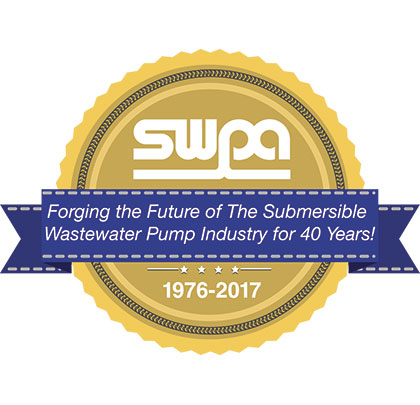Submersible wastewater pumps not only provide benefits when they’re operating well, they also ease the burden of repairs, service, and maintenance when compared with other pumping systems. This is especially true for field service. In this month’s column, SWPA Executive Director Adam Stolberg and SWPA member and ZEP Product Line Manager Steve Doolittle of Zoeller Company tackle your questions on field service and offer their perspective on how to take maximum advantage of a submersible wastewater pump’s design edge.
If field service or replacement is needed, submersible wastewater pumps have a reputation for ease-of-use and simple service. How have they earned that status?
A submersible pump is easily identified from the details found on its nametag, such as part number, date of manufacture, and serial number. Once identified and date of manufacture is known, a bill of material associated with that pump can be found. Manufacturers of submersible pump maintain a detailed record of the pumps they’ve manufactured and can provide most any part required to rebuild the pump. Since the construction and design of a submersible pump resemble that of an end suction centrifugal pump, repairing a pump of this type is routine for an experienced serviceman. If needed, the manufacturer will provide service and repair manuals to assist in the repair.
What attributes of a submersible wastewater pump’s outlet design reduce the need for special tools or for technicians to enter the pit for field service?
Submersible pumps are designed to be used with a rail system, enabling the pump to be installed or removed from the basin from ground level, without an entry of service personnel. The pump’s discharge contains an adapter that will automatically engage and sealed onto the discharge fitting as it is lowered down into the basin. A winch is used to lower the pump, sliding it down the rail pipes as it is being directed onto the permanent fitting that connects to the discharge piping. The machined mating surfaces and weight of the pump insures a tight seal. When being removed from the basin, the winch removes the pump from its point of engagement, pulling it up the rail pipes and directed through the access cover opening.
Since most submersibles can be serviced in the field without disturbing the overall system, what cost savings benefit does this provide?
Most systems are a duplex type where the two pumps are tied to a common force main. Each pump discharge is equipped with a shut-off valve. If a pump must be pulled from the basin for servicing its shut-off valve will be manually closed, allowing the system to temporarily operate off the other pump. Once the pump is removed from the basin using its rail system, it is inspected and can often be repaired at the job site. The quick repair turn-around at the site saves in labor time while the system continues to operate without requiring additional equipment or system modification.
What advantage do packaged wastewater lift stations provide for when replacement is needed in the field?
When there is a packaged lift station at the site it will usually come from a single source supplier. Troubleshooting the system and determining what is required and the exact nature any required parts will be easier to determine as everything came from the same supplier who will have a record of what went into its construction.
What can pump users expect to find in the typical complete packaged wastewater lift station?
A packaged pump station is one provided by a single source supplier and will be shipped to the job site ready for installation in the ground for connecting to the inlet and discharge piping and electrical conduit fittings. The system will include a basin with cover, rail system with rail pipes, discharge piping, check and shut-off valves, pumps, control panel, and level sensors. Sometimes a valve box is provided. The pump and control panel are typically shipped loose for field installation, although on some designs these may be installed prior to shipment.
Many submersible pumps are being used as replacements in older, non-submersible centrifugal pumps. What advantages to submersibles offer to these users?
These older style centrifugal pumps are installed in a below grade dry well adjacent to the wet well. These pumps are not designed for submersion and can be damaged if the dry well ever became flooded. During a major flooding event, these pumps will be damaged, sometimes beyond repair. Since a submersible pump design is derived from an end suction centrifugal, a dry pit submersibles can be configured as a replacement to these older models. Since these pumps are watertight and able to withstand flooding conditions they have become a solution to this inherent problem of older non-submersible centrifugal pumps. ◆
By SWPA Executive Director Adam Stolberg and Steve Doolittle, Zoeller Company
____________________________________________
MODERN PUMPING TODAY, June 2017
Did you enjoy this article?
Subscribe to the FREE Digital Edition of Modern Pumping Today Magazine!
![]()


